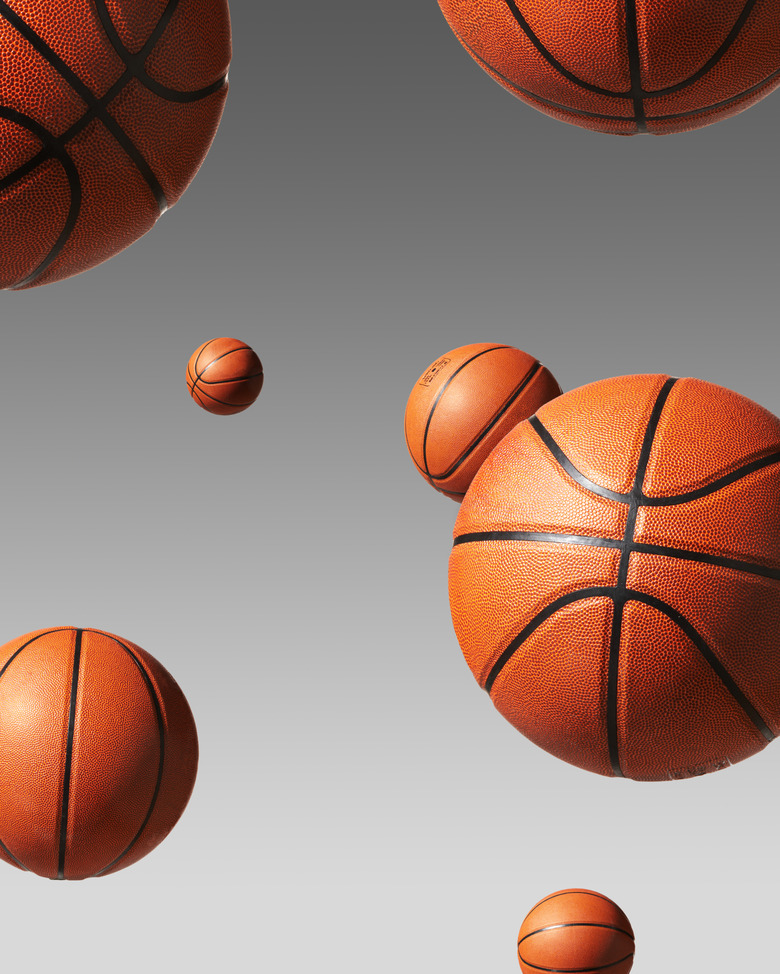Kids' Science Fair Experiments With Basketballs
Avid sports fans can turn their love for basketball into a science fair project that will have their fans cheering. All you need to do is come up with a hypothesis (an educated guess) about what you think will happen under certain circumstances and then design an experiment to test your guess. Here are a few ideas for science fair projects involving basketballs.
Floor Surfaces
Floor Surfaces
Design an experiment to test a hypothesis regarding how a floor surface will affect the way a basketball bounces. Basketball players depend on their ability to dribble a ball during the game while running up and down the court. Will dribbling a ball be easier on wood, concrete or carpet? Write down a hypothesis and then test it. Find a place to bounce a basketball on all three floor surfaces. Make sure that each time you dribble the ball on a different surface, the ball is inflated to the same pressure. Drop the basketball from the same height onto each surface. Have an assistant help you measure the height of the bounce. Test the ability of the ball to bounce on each surface five times. Record the data so that you can create a graph for each type of surface.
The Perfect Shot
The Perfect Shot
Come up with a hypothesis about how a basketball player's shot style affects how many shots he makes. Will a player make more shots shooting from chest height, chin height or over his head? Test the hypothesis by asking several people to volunteer to shoot baskets for you. Mark a spot with tape in front of the hoop, and have each volunteer shoot a basketball 10 times from each position: chest, chin and over the head. Record each time they shoot the position and whether the shot made it into the basket. Display and compare the results on a line graph.
Eye on the Ball
Eye on the Ball
Is vision necessary to make a basket? Come up with a hypothesis about whether players can sink a basket with their eyes closed or using just one eye. Gather a group of volunteers to shoot basketballs from a marked free throw line, with their eyes open, one eye shut and both shut. Record the percentages for each set of free throws. Volunteers should throw 10 free throws with their eyes open, then 10 with one eye shut and then 10 with both eyes shut. Compare the percentages for all of the volunteers. You can also add a fourth component, and test the theory that adding a visual marker will improve free throws by placing a target above the net.
Air Ball
Air Ball
Write a hypothesis about the effect of air pressure in a basketball on the ball's ability to bounce. Using three different balls — one inflated correctly, one slightly deflated and one overinflated — measure the height each ball will bounce on a basketball court. Record the data to prove your hypothesis. If you have a pressure gauge, you can start with a slightly deflated ball and slowly increase the pressure between bounces, recording the height at each increase in pressure. Make sure that you bounce the ball from the same height each time.
Cite This Article
MLA
Gagnon, Melissa. "Kids' Science Fair Experiments With Basketballs" sciencing.com, https://www.sciencing.com/kids-science-fair-experiments-basketballs-12037176/. 24 April 2017.
APA
Gagnon, Melissa. (2017, April 24). Kids' Science Fair Experiments With Basketballs. sciencing.com. Retrieved from https://www.sciencing.com/kids-science-fair-experiments-basketballs-12037176/
Chicago
Gagnon, Melissa. Kids' Science Fair Experiments With Basketballs last modified August 30, 2022. https://www.sciencing.com/kids-science-fair-experiments-basketballs-12037176/
